When selecting materials for your construction, industrial, or manufacturing projects, dependability and quality come first.201 stainless steel coil is now recognized because of its numerous applications across industries, and stands out as a cost-effective and versatile solution. With so much market competition, how do you ensure you are working with the best? This guide is tailored to address your every need concerning the advantages of 201 stainless steel coil, factors to look for in a supplier, and tips to stimulate success in your operations. Doesn’t matter if you are a seasoned veteran or new to the field, stay tuned while we break down everything you need to know for a smart investment.
What is 201 Stainless Steel Coil?
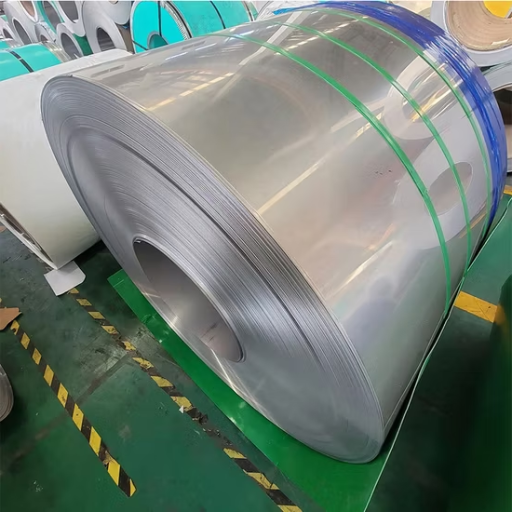
201 stainless steel coil is a cost-effective alloy with low operational costs and high performance, making it a go-to choice in a wide variety of industries. This is because of its durable structure which offers excellent corrosion resistance. 201 stainless steel is an austenitic stainless steel alloy mainly made of chromium, nickel and manganese. Furthermore, 201 stainless has suitable strength and flexibility which makes it convenient for use in kitchen equipment, automotive parts and construction materials. Its high resistance to rust and staining makes it a reliable choice in environments that experience constant exposure to moisture or wear.
Understanding the Composition of 201 Stainless Steel
201 stainless steel is unique because of its properties and wide-ranging applications. The alloy is primarily made up of the following elements:
- Chromium (16-18%)
Chromium is a key component that protects the metal from corrosion, forming a thin oxide layer on the surface of the steel. This is useful because it protects 201 stainless steel from rusting and staining.
- Nickel (3.5-5.5%)
Though 201 stainless steel has less nickel than 304, it is still well suited for good strength and formability. Additionally, being less expensive increases its economic appeal.
- Manganese (5.5-7.5%)
Manganese substitutes higher nickel content, lowering the price while still improving the strength of the alloy as well as enabling its ductility.
- Nitrogen (<0.25%)
The small quantity of nitrogen used helps in improving strength and hardness as well as helping in resisting stress deformation.
- Carbon (0.015% max)
Carbon helps improve hardness and strength of the material; however, its the content is limited to maintain another other properties such corrosion resistance.
- Iron (Balance)
The rest of the alloy is made up of iron, which is the framework of the steel and thus makes up its structure.
Core Features and Uses
- Density: 7.85 g/cm³
- Tensile Strength: 515-745 MPa
- Yield Strength: 275 MPa
- Elongation: 40% minimum
Due to its blend of strength, corrosion resistance, and cost efficiency, 201 stainless steel is extensively used in the cookware industry, automotive trims, architectural parts, and industrial equipment. It might not withstand corrosive conditions as well as 304 stainless steel, but the balanced composition of 201 stainless steel makes sure it provides dependable performance in a myriad of everyday applications.
Key Properties and Benefits of 201 Stainless Steel Coil
- 201 stainless steel coil is known for its impressive coils, making it suitable for high strength applications that require structural durability and reliability. Its versatility make it useful in numerous industries.
- While not quite as strong as 304 stainless steel, 201 still provides acceptable resistance to rust and staining for mild to moderate corrosion environments.
- 201 stainless steel is more affordable than higher grade alloys like 304 stainless steel due to lower nickel content, making it a more cost effective option for large scale projects.
- 201 stainless steel is designed for ease of fabrication and can be stamped, welded, and formed into multiple shapes while maintaining structural integrity.
- This material provides smooth to the touch surfaces which improves the overall look of manufactured products, such as strikers for kitchen appliances and trims for decoration, and so is always in demand.
Comparing 201 Stainless Steel with Other Grades
| Parameter | 201 Stainless Steel | 304 Stainless Steel | 316 Stainless Steel | 430 Stainless Steel |
|---|---|---|---|---|
| Chromium Content | 16-18% | 18-20% | 16-18% + Molybdenum | 17-18% |
| Nickel Content | 3.5-5.5% | 8-10% | 10-14% | None |
| Corrosion Resistance | Moderate | High | Very High | Low |
| Strength | High | Moderate | Moderate | Moderate |
| Cost | Low | Moderate | High | Low |
| Magnetic Properties | Slightly magnetic after cold working | Non-magnetic | Non-magnetic | Magnetic |
| Applications | Decorative, cookware, low-cost items | Food-grade, medical, construction | Marine, chemical, medical | Decorative, appliances |
| Heat Resistance | Moderate | High | Very High | Low |
| Durability | Good | Excellent | Superior | Moderate |
| Appearance | Slightly darker | Bright and shiny | Bright and shiny | Shiny |
How to Choose a Reliable 201 Stainless Steel Coil Manufacturer
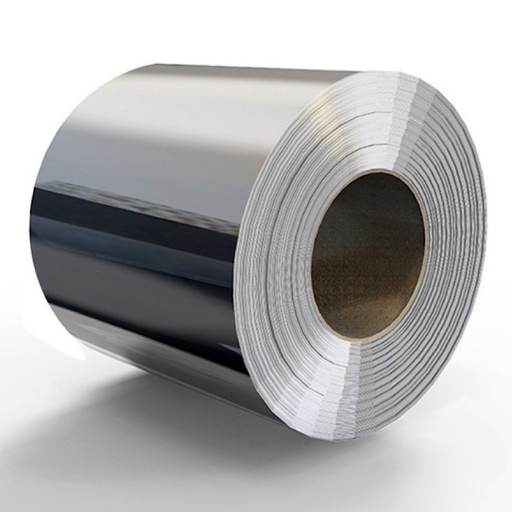
- Check Certification
Make sure the manufacturer has relevant certifications, for example, ISO 9001, which confirms the quality of the manufacturing processes and products.
- Assess Product Quality
Request product samples or check the specifications to make sure the steel coils are compliant with industry standards and your particular needs.
- Evaluate Experience
Manufacturers with a longer enduring history and those specifically producing 201 stainless steel coils are more preferable.
- Customer Reviews and References
Be on the look out for the feedback provided by the customers, or request from other clients to evaluate the reliability and reputation of the manufacturer.
- Range of Services
Give priority to those manufacturers that offer additional services such as custom design, packaging, and delivery schedules tailored to your needs.
- Competitive Pricing
Look at the different prices on offer but do not sacrifice quality for price. A reliable manufacturer should give quoted prices without concealed charges.
These are the steps to be followed to enable yourself easily and reliably select a manufacturer for 201 stainless steel coils.
Factors to Consider When Selecting a Supplier
| Factor | Description |
|---|---|
| Price | Total cost, not just upfront price. |
| Quality | Consistent and meets required standards. |
| Reliability | On-time delivery and accurate orders. |
| Location | Proximity to reduce transport costs. |
| Lead Time | Time between order and delivery. |
| Financial Stability | Supplier’s ability to sustain operations. |
| Communication | Clear and responsive communication channels. |
| Flexibility | Ability to adapt to changing demands. |
| Reputation | Track record and customer feedback. |
| Compliance | Adherence to legal and ethical standards. |
| Sustainability | Environmental and social responsibility. |
| Capacity | Ability to meet demand consistently. |
| Payment Terms | Favorable terms to support cash flow. |
| Risk Management | Ability to handle disruptions effectively. |
Questions to Ask Potential Manufacturers
When checking out different manufacturers, I prospected the following questions to ask them.
- What is your capacity of production, and can it handle my needed units of work?
- Do you issue quality assurance processes for your 201 stainless steel coils?
- Can you provide custom sizes and additional services to suit different specific project requirements?
- What is your average time for production, and what steps do you take to deliver on time?
- Are there any costs added to the overall price presented?
- What steps do you take regarding the continuity of product quality?
- Is there any after sale service, guarantee or warranty given on the products?
These questions would attempt to align my expectations with the manufacturer in regard to quality, customization, and timelines provided.
Evaluating the Quality of Cold Rolled Stainless Steel Coils
To determine if the cold rolled stainless steel coils is of good quality, the surface finish, thickness tolerances, mechanical properties, and adherence to industry benchmarks such as ASTM or ISO certifications must be checked.
What Are the Applications of 201 Stainless Steel Coil?
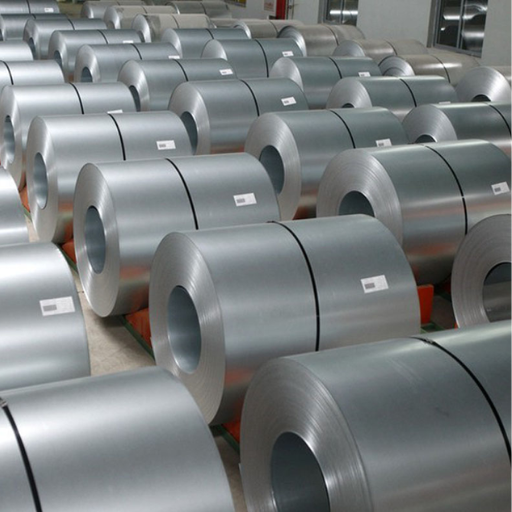
In scenarios that require both durability and cost-effectiveness, 201 stainless steel coil is commonly used. Its corrosion resistance and ease of maintenance makes it widely utilized in the kitchen equipment such as sinks, cookware, and appliances. It is also used in the manufature of automotive trim, architectural features, and other decorative engineering elements. The material’s strength alongside its light weight also makes it ideal for transportation and storage containers. These uses demonstrate 201 stainless steel coil’s reliability across a wide scope of industries.
Common Uses in Various Industries
The cost-effectiveness, durability, and anti-corrosion qualities of 201 stainless steel coil makes it easy to adopt into numerous sectors. Below are some key industries where this material is widely used along with recent data:
- Kitchenware and Food Processing:
Due to its hygienic benefits, resistance to oxidation, and corrosion, 201 stainless steel is extensively used in manufacturing of sinks, cooking appliances, and industrial-grade vessels. Industry reports indicate that the stainless steel cookware market is estimated to grow at a CAGR of 6.2% from 2023 to 2030, and the overall cookware market is anticipated to increase simultaneously.
- Automotive Industry:
Trim, exhaust systems, and various structural components are also made from 201 stainless steel in the automotive sector. Its lower mass and high strength construction helps improve vehicle efficiency and reduce emissions. Researchers recently reported the global automotive stainless-steel market reached a valuation of roughly $10.9 billion in 2022 and will grow steadily in the following years.
- Architectural Works and Building Framework
For architectural parts and modern construction decorative trims as well as structural components, 201 stainless steel is widely used. Its stainless steel beauty and decorativative nature make it preferable for both weathered places and interiors. Especially for developing economies, the market is construction stainless steel is forecasted to grow and provide the growing supply for the material.
- Transportation Service and Warehousing Structures
An equally important use is the manufacture of storage tanks, railcars, and shipping containers. The 201 stainless steel coil’s resistance to chemical reaction and temperature changes ensure safe and efficient transportation of goods. Globally, the logistics world’s data points towards a widening reliance on stainless steel storage technologies to handle growing freight requirements.
These instances underscore the practical, economical approaches 201 stainless steel coil is offering diverse industries. As industries continue to leverage its strength and adaptability, its market growth and applications are expected to broaden further.
Advantages of Using 201 Stainless Steel in Manufacturing
| Advantage | Description |
|---|---|
| Cost-effective | Lower cost due to reduced nickel content. |
| Corrosion resistance | Good in mild environments and atmospheric conditions. |
| High strength | Strong tensile properties for durability. |
| Good formability | Easily shaped into complex designs. |
| Lightweight | Suitable for weight-sensitive applications. |
| Aesthetic appeal | Bright, shiny finish for decorative uses. |
| Versatility | Applicable in various industries and products. |
| Recyclability | Fully recyclable, eco-friendly material. |
| Ease of maintenance | Smooth surface simplifies cleaning. |
Exploring the Versatility of Stainless Steel 201 Coils
| Key Point | Description |
|---|---|
| Corrosion Resistance | Protects against moisture and mild acids. |
| Durability | Withstands high temperatures and wear. |
| Cost-effective | Affordable alternative to higher grades. |
| Ease of Fabrication | Easily formed, welded, and processed. |
| Applications | Used in HVAC, cookware, automotive, and more. |
| Aesthetic Appeal | Bright finish for decorative uses. |
| Lightweight | Suitable for weight-sensitive designs. |
| Recyclability | Fully recyclable, eco-friendly material. |
How Does Cold Rolled Differ from Hot Rolled 201 Stainless Steel?
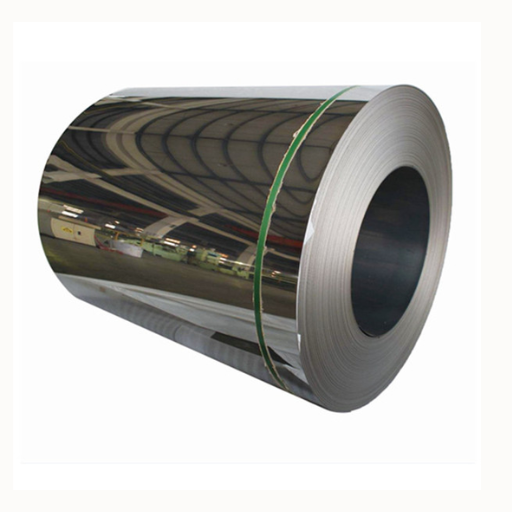
The processing techniques and properties of cold rolled and hot rolled 201 stainless steel differ. Hot worked stainless steel is done at high temperatures. This makes it useful for big projects where exact measurements are not important. It usually has a rougher surface finish and less uniform edges.
Cold rolled stainless steel, however, additional processing is done at or near room temperature. This makes the surface finish smoother, improves tolerances and increases strength. This makes cold rolled coils perfect for high-end appliances or automotive components which need high quality finishes and precision.
Overview of the Cold Rolling Process
The mechanical cold rolling method for stainless steel is critical for achieving high quality, enhanced strength, and surface finish. This method entails specific processes in order to get consistent outcomes and industry standards. Below outlines cold rolling processes:
- Pickling
The hot rolled stainless steel undergoes pickling, a process using chemicals to clean surfaces to oxide scales, impurities, and dirt laying over it. Through this, a pickled coil can surface prep removing most contaminants needed throughout their refining stages.
- Rolling
During the entire cold rolling process, the stainless steel coil goes through severe pressure while passing through multiple rolling mills. These steps perform threading over the material, while compressing its thickness. More so, the shape and contours are carefully polished ensuring uniformity throughout the material.
- Annealing
After rolling, the material goes through annealing to soften the steel and improve ductility by relieving internal stresses. Moreover retracting some empowers sets the material up to achieving the values tailored for the fabrication’s end product.
- Skin Passing
A skin pass rolling improves surface quality and the final shape through a uniform flat contour mix. The skin roll pass provides an aesthetic surface improving most visuals while retaining flatness alongside critical dimensions.
- Final Touches and Inspection
The last part of the process is performing surface treatment operations such as polishing or brushing. The part is checked for conformance in terms of thickness, finish, and the quality of work.
Every part of the process in cold rolling is important to refine the cold rolled stainless steel and prepare it for use in the harsh applications of different industries.
Benefits of Cold Rolled 201 Stainless Steel Coil
| Benefit | Description |
|---|---|
| High Strength | Enhanced durability through cold rolling. |
| Corrosion Resistance | Excellent protection against rust and moisture. |
| Smooth Finish | Polished surface for aesthetic appeal. |
| Dimensional Accuracy | High precision in thickness and flatness. |
| Versatility | Suitable for various applications and industries. |
| Ease of Fabrication | Easily formed, welded, and processed. |
| Cost-effective | Affordable alternative to higher grades. |
| Sustainability | Fully recyclable and eco-friendly material. |
Comparing Cold Rolled and Hot Rolled 201 Stainless Steel
| Parameter | Cold Rolled 201 | Hot Rolled 201 |
|---|---|---|
| Processing Temperature | Room temperature | Above recrystallization temperature |
| Surface Finish | Smooth, polished, shiny | Rough, scaly |
| Dimensional Accuracy | High precision | Lower precision |
| Strength | Higher due to strain hardening | Moderate |
| Cost | More expensive | Cheaper |
| Applications | Precision parts, appliances, automotive | Structural components, construction |
| Tolerances | Tight tolerances | Loose tolerances |
| Aesthetic Appeal | Visually appealing | Less appealing |
| Ductility | Lower due to hardening | Higher, easier to shape |
| Usage | High precision and finish required | Bulk and structural needs |
What Are the Standards and Specifications for 201 Stainless Steel Coil?
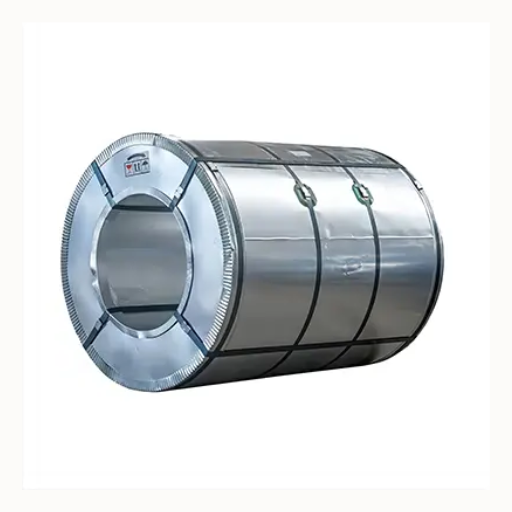
The quality and performance of 201 Stainless steel coil conforms to an array of international requirements. Most noted is ASTM A240 and JIS G4305, which outline the chemical makeup along with the mechanical and geometrical properties of the material. Generally, the 201 stainless steel contains about 16-18% chromium, 3.5-5.5% nickel, 5.5-7.5% manganese among other trace elements. These standards ensure that the steel provides feabr… strength, resistance to rust, and efficiency for appliances like cooking utensils, car parts, and other structural devices.
Understanding ASTM A240 for 201 Stainless Steel
| Key Point | Description |
|---|---|
| Standard | ASTM A240 for plates, sheets, and strips. |
| Material Type | Austenitic chromium-nickel stainless steel. |
| Grade | 201 (UNS S20100). |
| Chemical Composition | Includes chromium, nickel, manganese. |
| Tensile Strength | Minimum 101,000 psi. |
| Yield Strength | Minimum 43,700 psi. |
| Elongation | Minimum 56% (longitudinal). |
| Applications | Pressure vessels, architecture, appliances. |
| Surface Finishes | 2B, BA, No.4, Mirror, etc. |
| Thickness Range | 0.25mm to 200mm. |
Key Specifications and Standards to Know
As with any working material, one needs to know the specifications of ASTM A240 201 stainless steel and its relation to them, including its applications. ASTM A240 covers the scope of chromium and chrome-nickel stainless steel plates, sheets and strips for pressure vessels and other purposes where strength as well as resistance to corrosion is required. Here are the important specifications for 201 stainless steel under this standard.
Chemical Composition:
- Chromium: 16.0% – 18.0%
- Nickel: 3.5% – 5.5%
- Manganese: 5.5% – 7.5%
- Silicon: ≤ 1.0%
- Carbon: ≤ 0.15%
- Phosphorus: ≤ 0.06%
- Sulfur: ≤ 0.03%
- Nitrogen: ≤ 0.25%
- Iron: Balance
Mechanical Properties
- Tensile Strength: 100,000 psi (690 MPa)
- Yield Strength (0.2% Offset): 45,000 psi (310 MPa)
- Elongation: 40% (2 inches) for standard gauge thickness
Physical Properties:
- Density: 7.93 g/cm³
- Melting Point: 2550°F – 2650°F (1400°C – 1450°C)
- Thermal Conductivity: 16.3 W/m·K at 100°C
- Expansion Coefficient: 17.3 µm/m·K (20°C – 100°C)
Corrosion Resistance:
In relation to other stainless steels, 201 stainless steel possess moderate corrosion resistance. 201 stainless steel can withstand exposure to some acids, moisture, and atmospheric conditions. On the other hand, 201 stainless steel may lack the corrosion-resistant properties of 304 or 316 stainless steel in strongly acidic or chloride rich conditions.
Common Uses:
201 stainless steel is extensively used across industries for the following purposes because of its economical nature and high mechanical strength.
- Food Industry: Sinks, cooking hoods, and other countertop cooking utensils.
- Automotive: Trim and decorative parts as well as exhaust parts.
- Construction: Roofing, wall cladding, and door frames.
- Machinery: Pipe fittings and various other components to machines.
201 stainless steel fulfills ASTM A240, which means it has to adhere to high quality standards. Stainless steel performs well, lasts long, and is economical which is essential for any project or industry. These considerations must be taken into account when choosing materials for particular projects or industries.
Importance of Compliance with International Standards
Meeting global standards is important because it assured the quality, safety and reliability of materials and products. In my opinion, meeting such requirements proves beneficial for not only providing flexibility in the world market but also provides confidence to their customers and investors. It helps demonstrates commitment to quality and helps sidestep possible legal or operational problems which are an essential feature of every undertaking or industry practice.
How to Determine the Best Price for 201 Stainless Steel Coil?
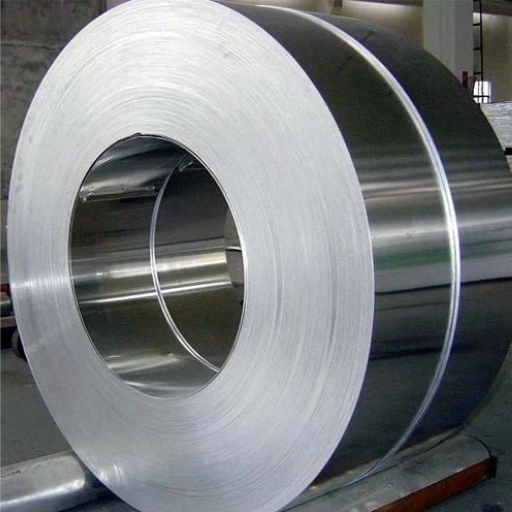
When looking for the best cost of a 201 stainless steel coil, observe the following:
- Review Industry Pricing: The market always changes, so check the prices for stainless steel and the supply and demand trends, as well as the raw material cost.
- Get Quotes From Different Vendors: Get quotes from different vendors. Make sure they are reputable supplier’s quotes. Also, make sure that you ask for price per unit and if they have delivery costs as well as does the price differ if ordered in bulk.
- Check The Regulations: Make sure that the product complies with the market standards for materials used as well as specifications. Sometimes, low prices indicate that the material grade is also lower.
- Look For Other Expenses: When estimating the total cost, look for other expenses incurred such as shipping, tax, and any extra processing cost .
- Review End Pricing: Speak to the vendors about the payments; the price for bulk purchases, other payments, and also how flexible the delivery dates are if the dates won’t compromise the product quality.
With good pricing along with quality assurance, you will be able to get a price that suits your requests.
Factors Influencing Coil Price
Both coil pricing and coils themselves vary in cost econometrically and because of the nature of the material and its production. Knowing these differences can assist prospective buyers to choose a coil more wisely. Here are some factors:
- Cost of raw materials
Per the industrial revolution, global coil prices are mainly driven by price of raw materials like steel, copper or aluminum. For instance, the price per one metric ton of steel increased to a maximum of $750 in 2023. Steel supply gaps and increasing costs for mining also greatly affect market conditions.
- Global supply and demand
Shifts in coil pricing, especially in supply and demand economies face sophisticated changes. The automotive, construction and even electronics industries greatly benefit from the supply, especially now with electric vehicles taking charge. There is now increased demand for copper coils which has also led to an increase in price – due to the global push for electric vehicles.
- Production Cost and Energy
The production of coils has too much of an energy burden. Factors such as political and economic turmoil could inevitably lead to increased production costs. There has been an over 30% spike in electricity pricing in Europe alone for this years report which greatly increases the cost for metal production even more, making it tougher for other non-metal companies.
- Import Regulations and Tariffs
Certain nations have placed tariffs or trade limits on imported goods, impacting the pricing of coils. Take, for example, the United States, which continues to apply section 232 tariffs on imported steel and aluminum, resulting in a 25% surcharge on international steel products.
- Currency Exchange Rates
Changes in foreign currency exchange rates directly affect the pricing of imported coils. A weaker country’s local currency, for instance, could lead to higher prices for steel and other basic materials purchased from suppliers abroad.
- Technological Advancements and Innovations
Once new manufacturers’ technologies or methods are adopted, they tend to yield lower production costs over time, and the value of the coils may have differences that justify the costs. Certain high precision coils used in the aerospace or medical fields tend to be more expensive due to the extensive engineering involved.
- Seasonal and Regional Trends
In construction, as an example, there is a seasonal demand that impacts the coil’s demand and supply. Areas that have ongoing infrastructure projects, for instance southeast Asia in 2023, experience greater demand and therefore, inflate local prices.
- Environmental Regulations
The production activities are having a more direct impact due to the tighter sanitaries policies rising standards. The European Union has put forth their Green Deal pushing for greener initiatives, which has resulted in manufacturers working towards green solutions and sustainable practices, which would increase cost in the short run.
Analyzing elements like these enables buyers to more accurately anticipate changes and control financial allocations in the constantly shifting coil market.
Tips for Getting the Best Deal from Suppliers
- Develop Meaningful Connections
Building a good rapport with suppliers will increase their likelihood of offering good pricing and favorable terms. Through trust and consistent communication, suppliers may begin to prioritize your needs over others and may start extending discounts or exclusive agreements. For example, in the coil industry, customers served over the long term are oftentimes offered loyalty pricing or given preferential access to new stock.
- Negotiate Details of the Contract
Take a proactive approach in negotiating pricing, minimum order quantities, or even delivery schedules. Be armed with data on market trends and competitor rates as their offer will strengthen your position. Research indicates that businesses negotiating multi-year contracts enjoy cost reductions of 5–10% on an annual basis.
- Merge Orders
Instead of placing multiple smaller orders, combine them into one bulk order. This strategy will help lower costs as discounts are often applied to bulk orders. Research indicates that bulk purchasing may reduce unit costs by as much as 20%, subject to the product and supplier.
- Expand Your Supplier Network
Being reliant on a single supplier poses risk and diminishes your bargaining power. Working with multiple suppliers enhances competition for pricing and mitigates potential disruption to the supply chain. For instance, organizations that diversified their suppliers during volatile market conditions enjoyed a 15% reduction in procurement costs.
- Follow Up Market Analysis and Timing
Understanding conditions of the market, for example the cost of the input goods, as well as the time of year can help you determine when to make purchases. As an example, steel buyers that noted during Q2 there was a drop in prices were able to buy coils at 8 percent lower than the rate other buyers were paying by the end of the year. Constant analysis of the market helps you gain an advantage with respect to other competitors in negotiations.
Understanding Market Trends for Stainless Steel Coils
An analysis conducted using the most current data trends indicates that the supply of stainless steel coils increases during the third quarter of the year due to additional industrial activities, underscoring the urgency for careful planning before this timeframe.
References
- TRACE: Tennessee Research and Creative Exchange – Discusses stainless steel applications and properties in manufacturing contexts.
- Cal Poly Digital Commons – Explores mechanical properties and corrosion behavior of stainless steel, including AISI 201.
- Kaunas University of Technology Repository – Provides insights into stainless steel grades and their applications in manufacturing.
Frequently Asked Questions (FAQ)
Q: What is a high-quality 201 stainless steel coil?
A: A high-quality 201 stainless steel coil is a type of austenitic stainless steel known for its excellent corrosion resistance and durability. It is often used in various applications, including construction and manufacturing.
Q: What are the main differences between 201 and 304 stainless steel?
A: The main differences between 201 and 304 stainless steel are their composition and properties. 304 stainless steel contains more nickel and chromium, which provides better corrosion resistance compared to the higher manganese content in 201 stainless steel.
Q: How does the 2b finish affect the properties of a stainless steel sheet?
A: The 2b finish on a stainless steel sheet is a smooth, reflective finish that enhances its appearance and provides a better surface for further processing. It also improves the sheet’s resistance to corrosion and staining.
Q: What are the applications of 201 cold rolled stainless steel?
A: 201 cold rolled stainless steel is used in a variety of applications such as kitchen equipment, automotive trim, and architectural structures due to its strength, formability, and aesthetic appeal.
Q: Why is astm a240 201 stainless steel popular in industrial use?
A: ASTM A240 201 stainless steel is popular in industrial use because of its cost-effectiveness, good mechanical properties, and sufficient resistance to corrosion and heat, making it suitable for applications where high strength and moderate corrosion resistance are required.
Q: What should I consider when choosing a steel coil manufacturer and supplier?
A: When choosing a steel coil manufacturer and supplier, consider their reputation, quality certifications, product range, pricing, and customer service. It’s important to ensure they meet industry standards and deliver high-quality products like grade 201 stainless steel coil.
Q: Can 201 stainless steel be used in high-temperature environments?
A: 201 stainless steel is not recommended for high-temperature environments as it has a lower resistance to heat compared to other grades like 304 or 316. For applications involving high temperatures, it is better to use grades with higher nickel content.
Q: What is the significance of manganese in 201 stainless steel?
A: Manganese in 201 stainless steel acts as an austenite stabilizer and allows the reduction of nickel content while maintaining similar mechanical properties. This makes 201 stainless steel cost-effective while still offering good corrosion resistance and toughness.
Q: Is 201 stainless steel suitable for marine applications?
A: 201 stainless steel is generally not recommended for marine applications due to its lower nickel content and reduced corrosion resistance compared to grades like 316 or 316L, which are better suited for such environments.
Q: How does the addition of nickel benefit stainless steel properties?
A: The addition of nickel in stainless steel enhances its corrosion resistance, toughness, and formability. It helps maintain the austenitic structure of the steel, providing flexibility and durability in various environments.







